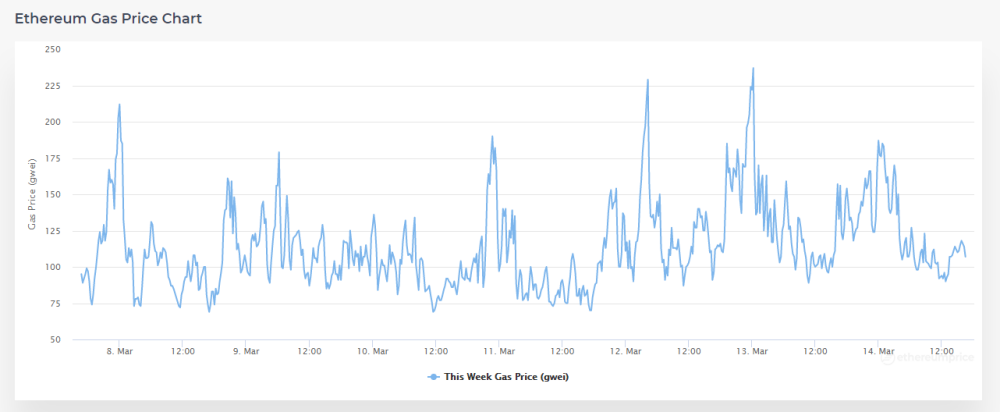NFTs are the talk of the town. Everyone’s either really excited or really concerned about the whole phenomenon. Some consider it a logical endpoint for capitalism, buying and selling bits of data with no physical substance. But for artists, it’s an amazing way to get their art to potential buyers without having to take the traditional, generally more expensive, routes.
Naturally then, the first thing that comes to the mind of an artist after reading about NFTs is – “How much does it cost to mint an NFT?” Here’s everything you need to know.
Related: Best NFT Marketplace
The average cost to mint and transfer an NFT
The cost to mint an NFT on Ethereum, the most popular blockchain host for NFTs, can be a little expensive, though incoming Ethereum patches are trying to fix this problem.
According to one analyst, the minimum cost of minting an NFT is around $70, which means that the token price would be somewhere close to $100. Why such a high price, you ask? Well, there are a few hidden costs that are factored in as well. One of them is the cost of being on an online sales platform which will skim about 3 to 15 percent for the initial sale and about 10% for secondary sales.
Then there’s the gas price, which will depend on the current gas rate as well as the amount of gas that is required for your transaction. But what exactly is gas and how is it calculated?
Related: How Does Ethereum Work?
What is the Ethereum Gas fee?
The Ethereum gas fee is the amount that you have to pay for transactions on the Ethereum blockchain. This gas fee is transferred directly to miners who provide computer power to verify your transaction and keep the whole shindig going.
That means that you have to have some extra ETH in your wallet so that you can pay for the gas for – minting NFTs, updating prices, listing pieces for auction. High gas prices tend to be a huge barrier to entry for artists and most of them wait for the gas prices to come down before minting an NFT.
Related: What are NFT Stocks?
Why do Gas prices change?
The amount of gas that is required for a successful transaction remains constant. But gas prices tend to go up when the Ethereum network is congested or the demand is high for NFT transactions. This is because there is a restriction on the sum of transaction gas that can be used for every Ethereum block. And whenever there’s a restriction of supply as such, prices will fluctuate based on traffic.

Since an NFT is a much more complicated form of transaction than your regular everyday transaction, you have to have a lot of gas for the transaction to be processed. Of course, there are ways to reduce the transaction cost by changing the amount that you are willing to pay. Your transaction will be picked up when a miner feels it is profitable for him/her to process it.
Related: NFT Music Meaning
Or, you could wait for the gas prices to come down. You can check out the gas prices here. Note that GWEI is the Ethereum base unit for gas, with 1 billion GWEIs in 1 ETH. Look at the gas prices over the past few days and see whether or not your transaction will be picked up in the foreseeable future. This can be a cost-effective method if your transactions are not time-sensitive.
So, this is the basic rundown of the expected cost of minting an NFT. The basics of demand and supply work here as they do with any other market. But the addition of gas prices for conducting transactions is something new. If you’re not conducting time-sensitive transactions, do keep an eye out for falling gas prices as they can significantly bring the cost of minting an NFT.
RELATED













Discussion